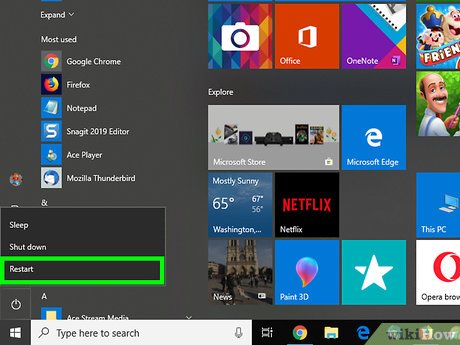ShellExView is a free utility that allows for easier manipulation of shell extensions that are installed on your computer. You can use this application to disable and enable certain shortcuts or commands available from the programs in your computer. You can do use without going through the hassle and risk of editing your Windows registry. It can be used for troubleshooting and solving context-menu problems in Windows Explorer, brought on by certain right-click actions.
StepsPart 1Part 1 of 3:Downloading ShellExView
1Download ShellExView. Go to http://www.nirsoft.net/utils/shexview.html and download ShellExView. Look for the download links towards the bottom of the page.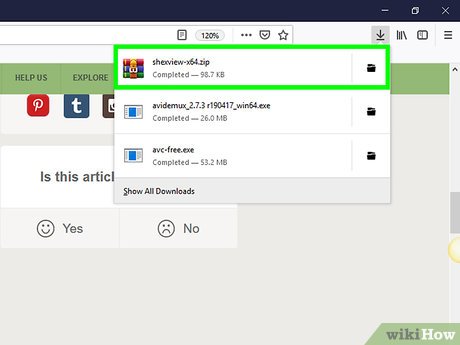
2Install the program. Double-click on the setup file and let the program install. The setup file is named shexview_setup.exe.
3Run the program. Locate the program shortcut from the Start menu or from your desktop. Double-click on it to launch the program.Part 2Part 2 of 3:Viewing Shell Extensions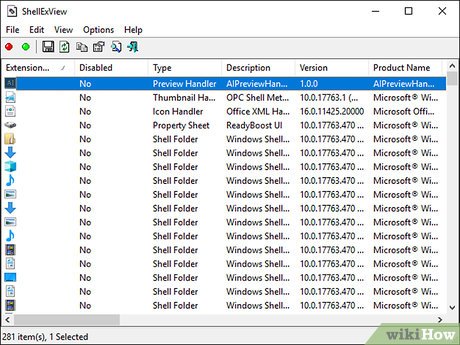
1View contents. Upon running the program, a list of extensions will be listed in a simple tabular format.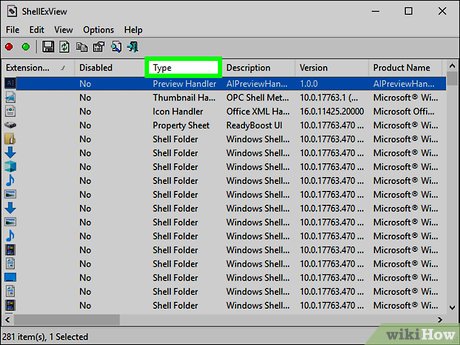
2Sort by type. For easier management and manipulation of the extensions, better to sort them by type. You don’t want to mistakenly edit or delete something from an incorrect item type. Click the Type column to sort the extensions properly.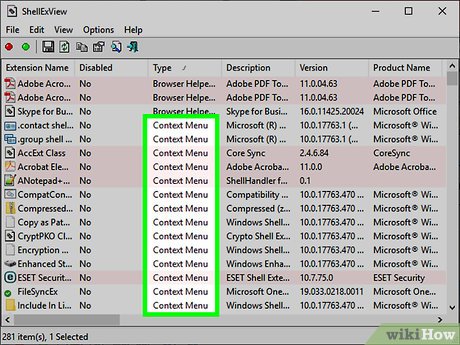
3Focus on Context Menu. Most reasons for wanting to manipulate shell extensions involve problems with Windows Explorer, especially with right-click actions. The context menu extensions will be a good place to start in troubleshooting this.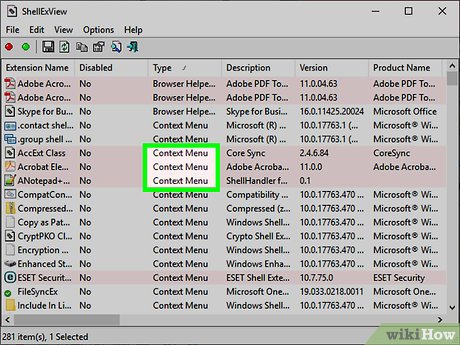
4Notice items highlighted in red. Before you go making any changes, pay close attention to the items highlighted in red. These are the non-Microsoft extensions, brought by the software you installed.Part 3Part 3 of 3:Disabling Shell Extensions
1Exercise caution. Before making any changes, make sure you exercise caution. Any wrong manipulation can cause Windows to be unstable.You may want to do a system restore point before proceeding.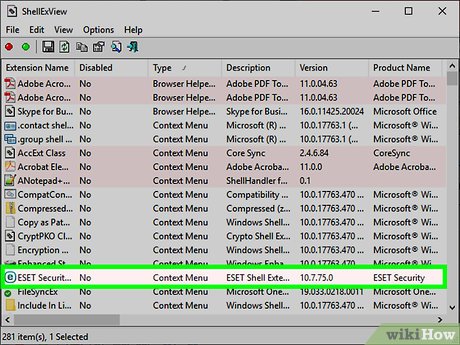
2Select a shell extension. Only select items highlighted in red, which are the non-Microsoft extensions.Do not touch the Microsoft extensions as it may do your computer harm.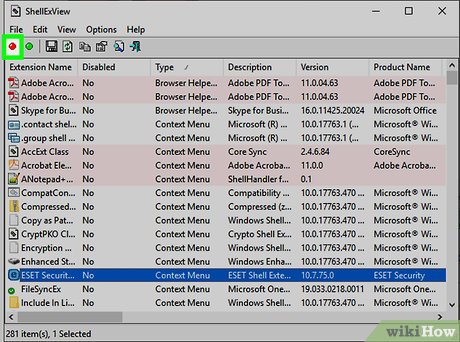
3Disable an extension. While the selected extension is highlighted, click the red circle button on the action toolbar. This will disable the selected extension.Click the “Yes” button on the confirmation dialog box when you’re done.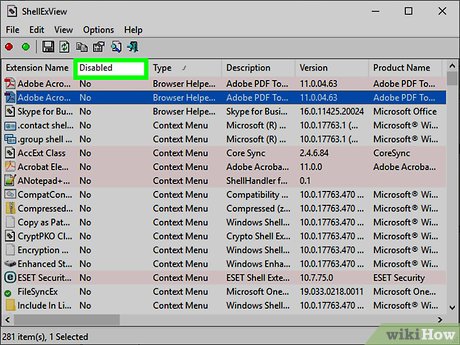
4View the disabled extension. You will notice which extensions are disabled by looking at the Disabled column. All those marked with Yes are disabled.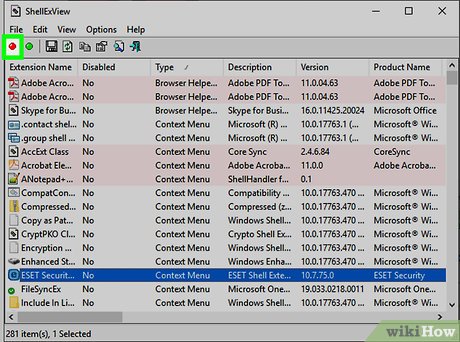
5Disable more extensions. Repeat Steps 2 to 4 to disable more extensions.6Reboot the computer. All the changes you’re making will only take effect after your reboot your computer.